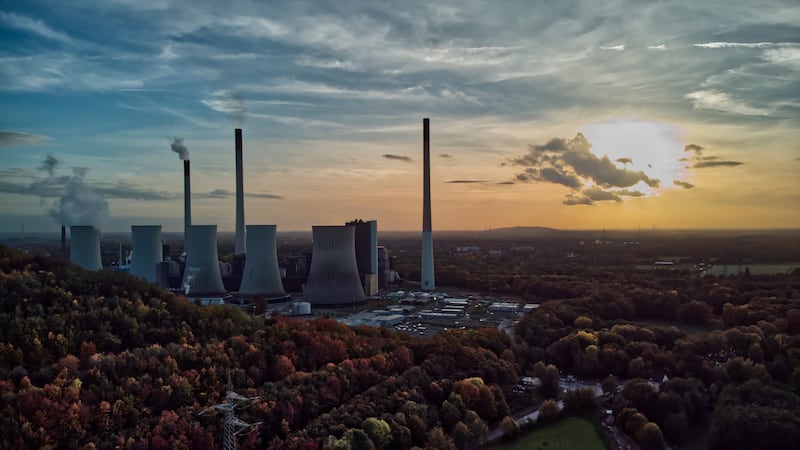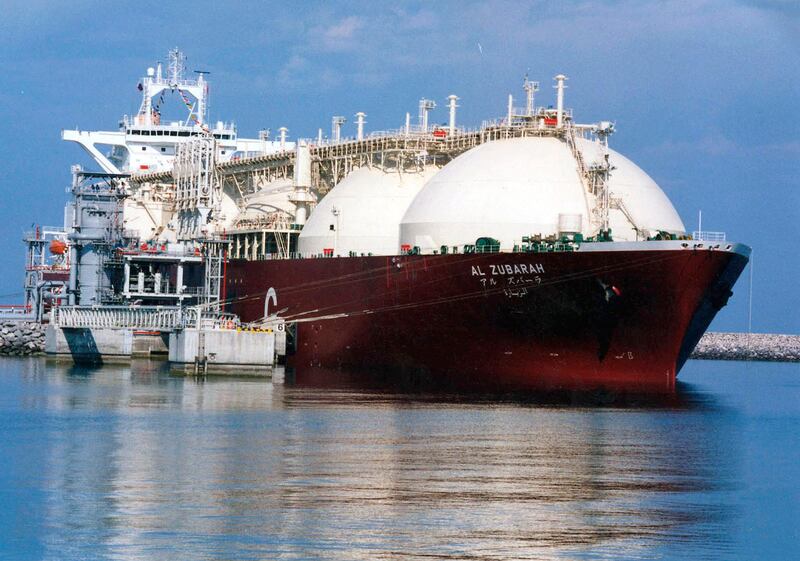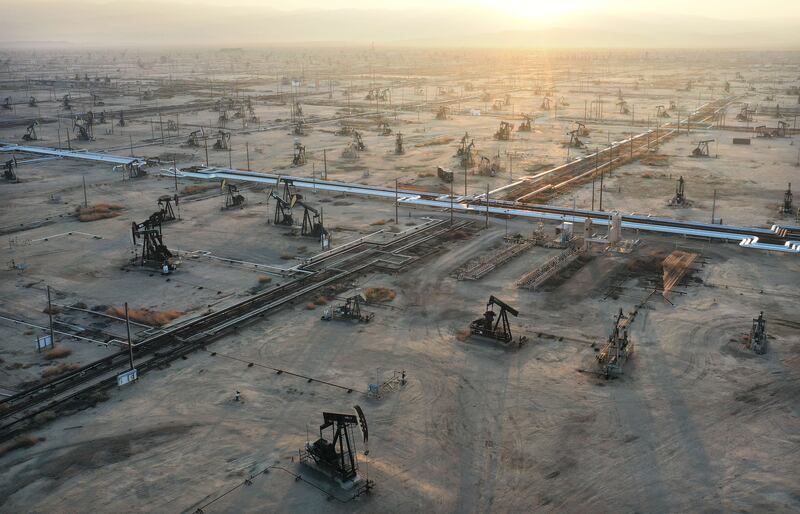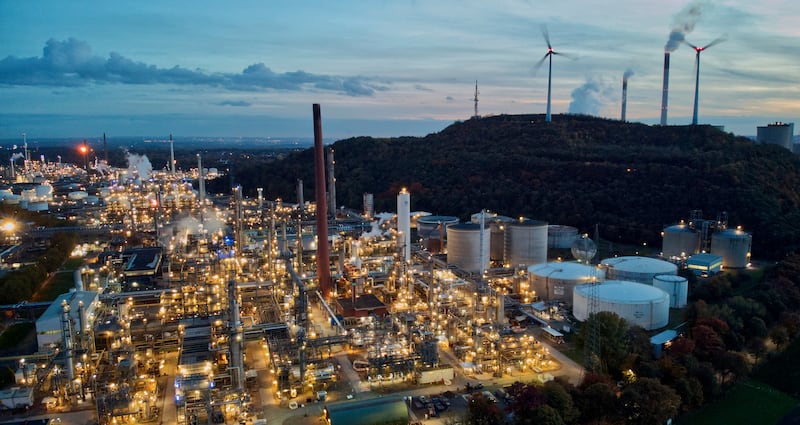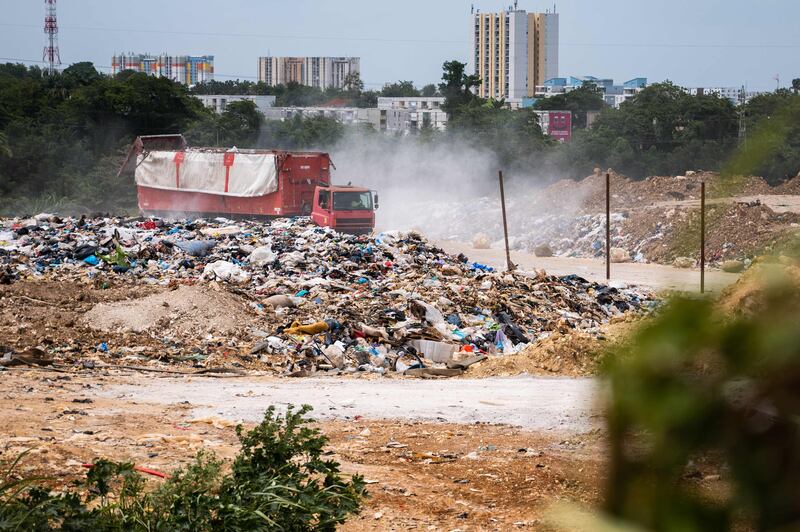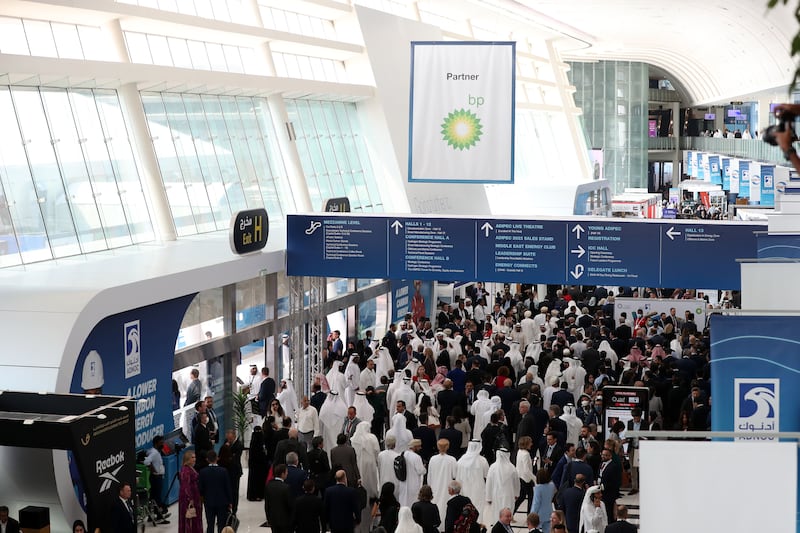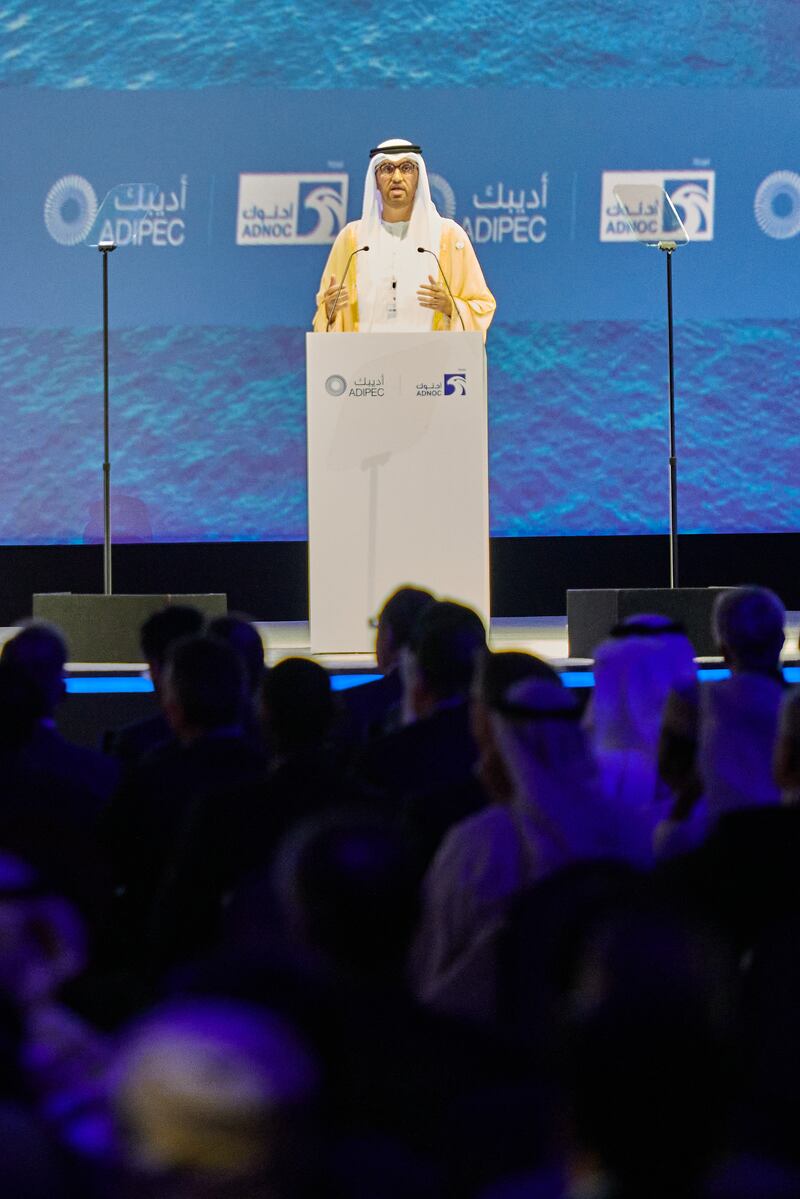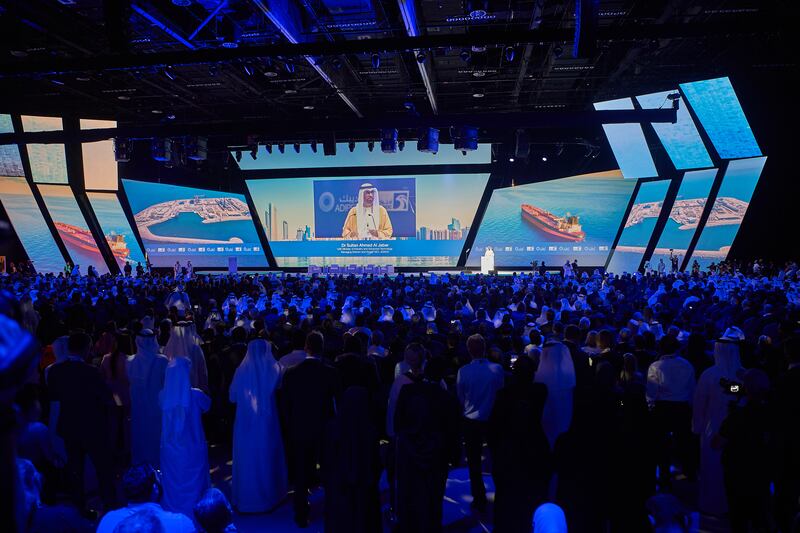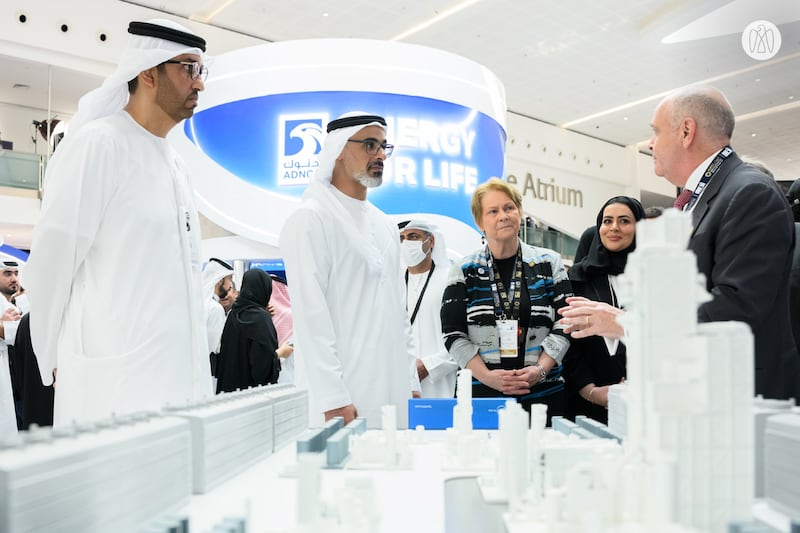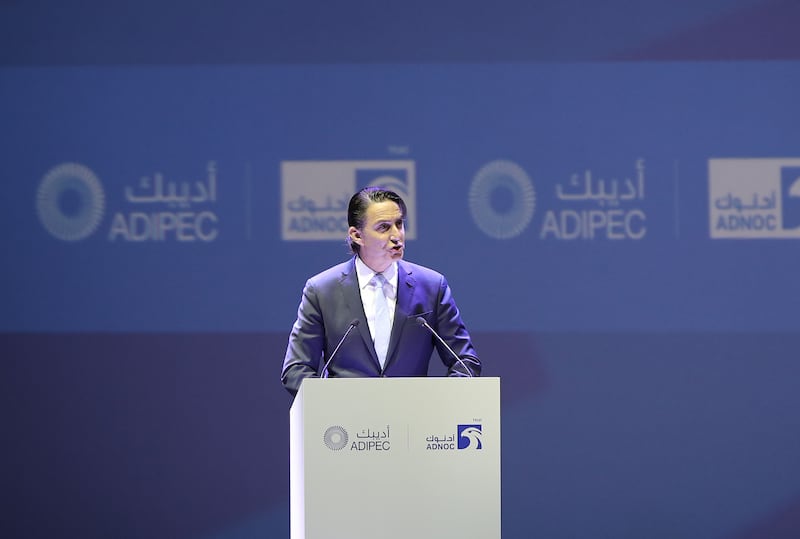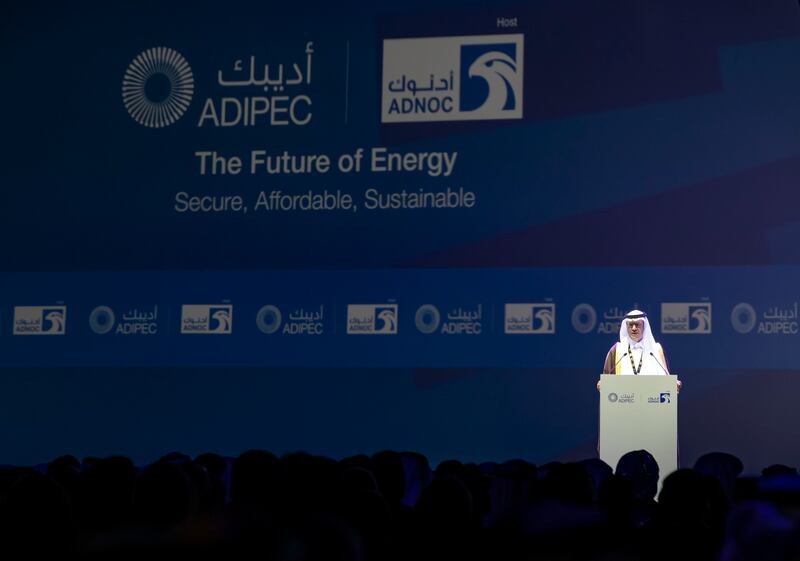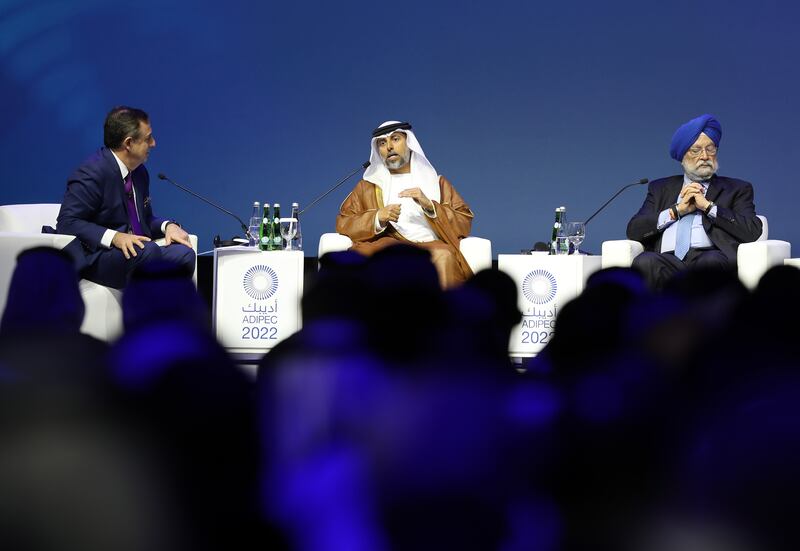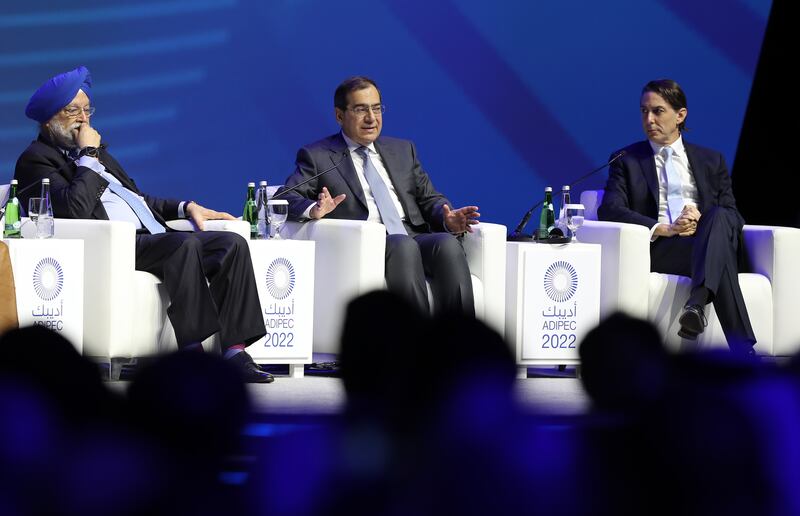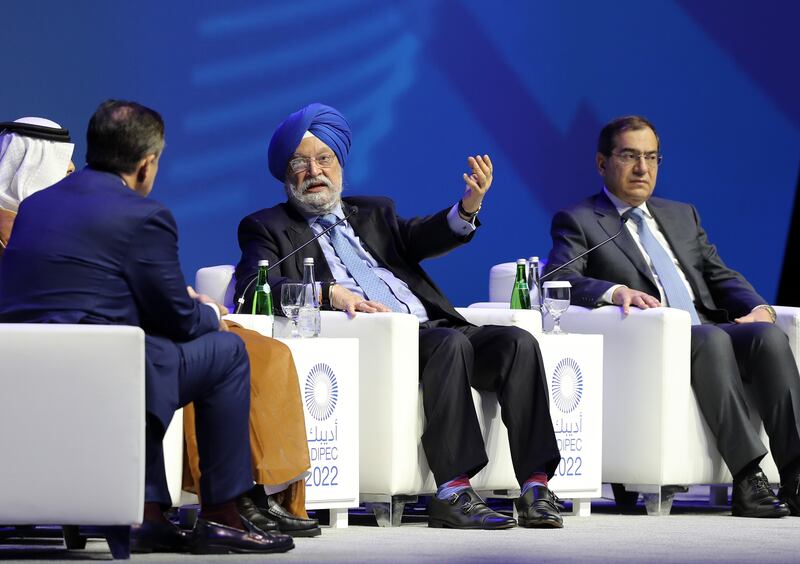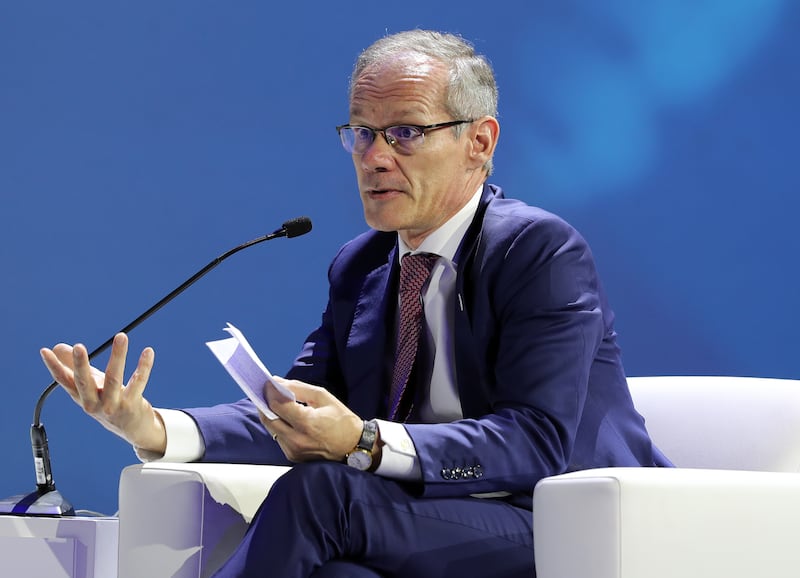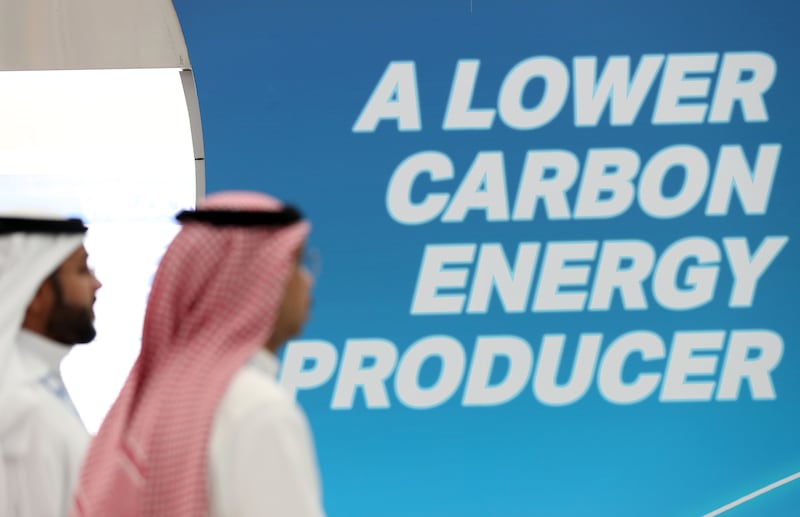Calls have been made by the UN for a redoubling of efforts to cut methane emissions to help limit global temperature rises to 1.5°C.
The UN Environment Programme (UNEP) report on methane emissions, launched in Abu Dhabi, said that methane concentrations in the atmosphere were continuing to rise.
Efforts by the fossil fuel sector offer “by far the greatest potential to achieve rapid methane emissions reductions”, the report from UNEP’s International Methane Emissions Observatory said.
Currently, only a fraction of companies are providing methane emissions estimates that are based on actual measurements.
Methane is a much more potent greenhouse gas than carbon dioxide, although it does not remain in the atmosphere for as long.
The “An Eye on Methane” report, the second such study from the observatory, was released at the Abu Dhabi International Petroleum Exhibition and Conference (Adipec).
Inger Andersen, UNEP’s executive director, said in a statement that because methane remains in the atmosphere for fewer years than carbon dioxide, cutting emissions of the gas was “the fastest way to tackle climate change in the short term”.
“Companies are making progress, but they must move faster and harder,” she said. “We need more companies to act and they must be bolder.”
While it calls on fossil fuel companies to reduce methane emissions, the report says that doing so “does not reduce the urgency of transitioning away from fossil fuels”.
Niklas Hoehne, of the New Climate Institute in Germany, said reducing methane emissions from the fossil fuel industry should be “relatively easy”.
Sources of methane emissions
Historically, methane has been released by coal mines, a reflection of the fact that different types of fossil fuels are often found together. This methane could, Dr Hoehne said, be collected and sold, which is “a low-cost option”.
Another source of emissions has been leaking pipelines. Dealing with these can make financial as well as environmental sense, Dr Hoehne said.
“In oil production, there’s also sometimes methane coming out of the oilfield. In the early days, it was vented; much better is to burn it,” he said, explaining that this produces CO2, a less potent greenhouse gas.
“The best thing is to collect and use it. In all these cases, it’s in the interests of the fossil fuel industry to reduce these emissions.”
The report states that more than 80 oil and gas companies with operations in about 60 countries have joined the initiative’s reporting programme, the Oil and Gas Methane Partnership 2.0. These firms represent more than 30 per cent of global oil and gas production.
“Still, the industry needs to ramp up efforts to cut methane emissions across the entire sector and to reliably quantify and report emissions,” the report said.
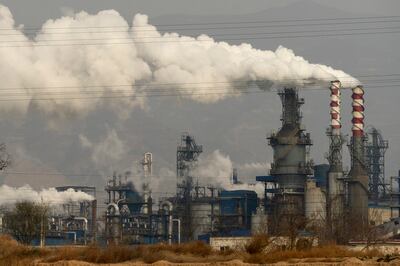
Scientists have estimated that global methane emissions from industry to be between 80 and 140 million tonnes, with the International Energy Agency's estimates “at the lower end of this range”, the report said.
Estimated methane emissions reported through Oil and Gas Methane Partnership 2.0 are only 1.3 million tonnes, so there is a “large discrepancy between the estimates of global industry emissions and the proportional share reported by OGMP 2.0 member companies”. Improvements in reporting could reduce this discrepancy.
“We need improved methane emissions data to close the emissions gap and reduce global warming in the short term,” the report said.
A lack of data has made it harder for governments to carry out the targeted measures needed to cut methane emissions, European Commissioner for Energy Kadri Simson said in a statement.
“To reduce methane emissions, we need to know more,” she said. “Who is emitting, where and how much … What you do not measure, does not get addressed.”
At the Cop26 climate change gathering in Glasgow, UK, last year, 122 countries signed the Global Methane Pledge, which involves cutting global methane emissions 30 per cent by 2030.
At Cop27, to be held in Sharm El Sheikh, Egypt, from November 6 to 18, the observatory will launch its Methane Alert and Response System data platform, which will provide data to companies, policymakers and others to help them identify ways to reduce emissions.
Dr Hoehne said there had been a rise in the concentration of methane in the atmosphere in the past year and researchers, as yet, “don’t fully understand why”.
“This is worrying,” he said. “Something is happening. So it’s even more important to do something about it.”
He cautioned, however, that efforts to reduce methane emissions should not distract from work to control emissions of CO2.
The observatory is looking to expand its scope so that it includes emissions from waste and landfill sites (which account for more than 20 per cent of methane emissions), rice cultivation (nearly 10 per cent of methane emissions) and livestock (about one third of methane emissions).
Cutting methane emissions from animals and rice cultivation was possible, Dr Hoehne said, but was “much more difficult” than reducing the release of the gas by the fossil fuel sector.
